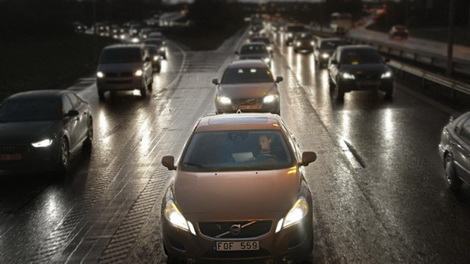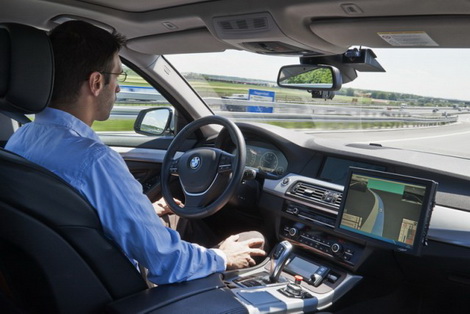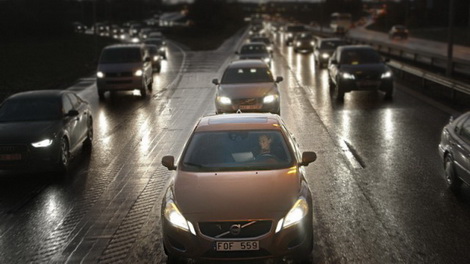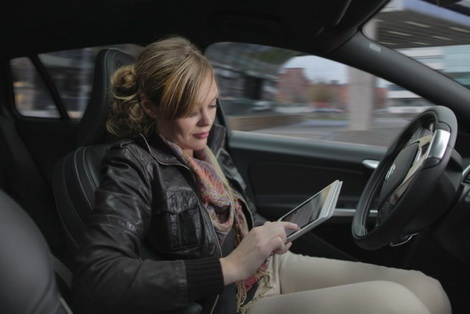Computers, we are usually told, will soon be doing everything for us. They already, after all, do so much. From controlling the temperature of our fridges to unscrambling the incoming signals of our TV subscriptions to making our phone calls, computers do more or less everything for us now. It may only be seven decades since Alan Turing and Tommy Flowers put their remarkable minds together to the task of creating an electro-mechanical machine that could crack Nazi Enigma and Laurentz ciphers, but that 70 years has seen an unmitigated explosion in the power and potential of electronics.
And driving? Oh yes, computers will soon be doing that too. After all, your brakes, fuel, much of your steering and increasingly even things like headlights are being controlled by computers. So it is with aircraft (a pilot isn't really in control of an airliner these days - they input their wishes and a series of powerful computers works out the best way to make the aircraft do what's needed) and so it will soon be with cars. Mercedes-Benz says that the new S-Class is already close to being autonomous, or 'self-driving'. Last year, Audi boss Rupert Stadler controlled an A7 on stage just using his iPhone. It surely can't be long before we're all kicking back, reading the paper and sipping a coffee while our cars drive us to and fro.
Hmmm. Perhaps not. Like so many exciting technologies, robot cars seem to have matured in a technical sense before we or the world around us are quite ready for them. Although almost every car maker has joined tech giant Google in working on cars that can drive themselves, it seems that the likelihood of any of us actually buying one is more remote than they had been thinking.
According to the Washington Post, the 3D sensors that feed data to the computers controlling Google's fleet of driver-less Toyota Prius cost around $70,000 (that's about €51,000). Even allowing for the fact that they are still at an expensive experimental stage, that would suggest that an initial driver-less car would cost around $100,000 in an American dealership. Studies by JD Power have shown that only around one fifth of American car buyers would 'definitely' or 'probably' buy a self-driving car even if the average price were to be reduced by more than two thirds of that $100,000.
Ah, but the potential is there for so many savings, argue the robot car pioneers. Google got into the self-driving car game because Google co-founder Sergey Brin lost a good friend to a car accident and vowed that he would create a car, driven and controlled by a computer that could simply never have an accident. A noble wish, but we're actually a surprisingly long way away from that being possible. While the power of computers is reckoned by most people to be close to omniscience, actually they are still only as good as the people that program them. Indeed, in many ways, we're still superior to the microchip.
Volvo's Eric Coering is at the cutting edge of making cars as autonomous as possible, but even he believes that a human driver still has a significant role to play. "Taking away the human brain is not the right approach. You can do that, but it is probably very far away. But you want to make sure that the human brain is alert and capable of dealing with upcoming situations. One way of illustrating it is like this; in our safety centre, maybe twenty years ago, there were a lot of people working on bio-mechanics, trying to understand how the body reacts in case of an accident. Right now we have a lot of people who are human behaviour experts. They try to understand how humans behave in these situations. So, we're not trying to take the driver out of the loop. I mean, driving a car is fun, and people want to drive cars and, obviously, we think that's a good thing. But we try to make sure that the driver has the right information, that they are fit to drive, feel comfortable in the car and so on, because all of these aspects have a role to play. An alert and fit driver is capable of dealing with any upcoming situation, so it's not about taking out the driver, it's about making sure the driver is well informed and fit to drive."
The thing is that we, humans, are still better than machines at assessing and reacting to risk and danger. Computers have to have models, road maps if you will, that lay out a given situation and a given set of reactions to it, and a given set of reactions to those reactions. While Intel once predicted that computers would continue to follow Moore's Law, and double in power every 18 months or so, there is evidence to suggest that we are already reaching the outer limits of that law, unless or until so called Quantum Computers can be brought to bear - and they are still at the very basic laboratory stage.
Then there are worries that for all the savings in safety and fuel consumption (the US Rocky Mountain Institute reckons that existing cars could save 20-30 per cent in fuel if they could be computer-controlled to run in close-knit 'platoons' on the motorway), a rise in robot cars could lead to increasing vehicle usage and further urban sprawl. After all, commuting starts to look more appealing if the microchips are doing the hard work, and public transport could quickly lose whatever little appeal it has left.
Perhaps the final word should be left to the military. The US Air Force has been using unmanned drones for a decade now, and last year actually trained more drone pilots than pilots of real 'proper' aircraft. Even so, outgoing US Air Force Chief of Staff General Norton Schwartz said in his final press conference that "manned aviation will be part of the chemistry at least for the near term. Manned aviation will be part of our force structure, I would estimate, at least for a generation and a half. Thirty years probably - maybe more, probably not less."
If the gung-ho US Air Force is keen to keep real pilots at the stick, perhaps we should be as cautious when it comes to keeping real human drivers behind the wheel.




